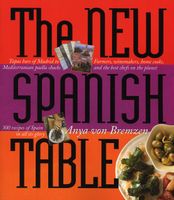Advertisement
Tapas
Little Bites, Big Tastes
Published 2005
In a compulsively social country like Spain, the tapeo—tapas bar crawl—is a ritual of near-religious importance. And it isn’t just the nibbling and the imbibing: In Spain, the tapeo embodies a whole worldview and a lifestyle.
The verb tapear, says the Sevillian tapas expert Juan Carlos Alonso, “is a broad concept that encompasses multiple actions: drinking, eating, chatting, strolling, greeting, seeing, being seen . . .” Indeed.
In its original form, the tapa (from the word tapar, to cover) was a free slice of cheese or jamón that topped a glass of sherry, thus protecting the drink from flies and dust. The tradition originated in the nineteenth century in Andalusia, the center of sherry production, where scorching summers make full meals unthinkable. Besides, a strong, fortified drink such as sherry fairly demands a snack. From these basic beginnings, the tapa evolved into a truly protean concept defined only by size and function: a bite to accompany drinks, normally eaten with one’s hands, standing up. Place a portion of leftover stew in a small cazuela and you’ve got a tapa. Order a beer, chat up your neighbor, and it’s a fiesta. No wonder the Spanish prefer hanging out in bars to entertaining at home.

